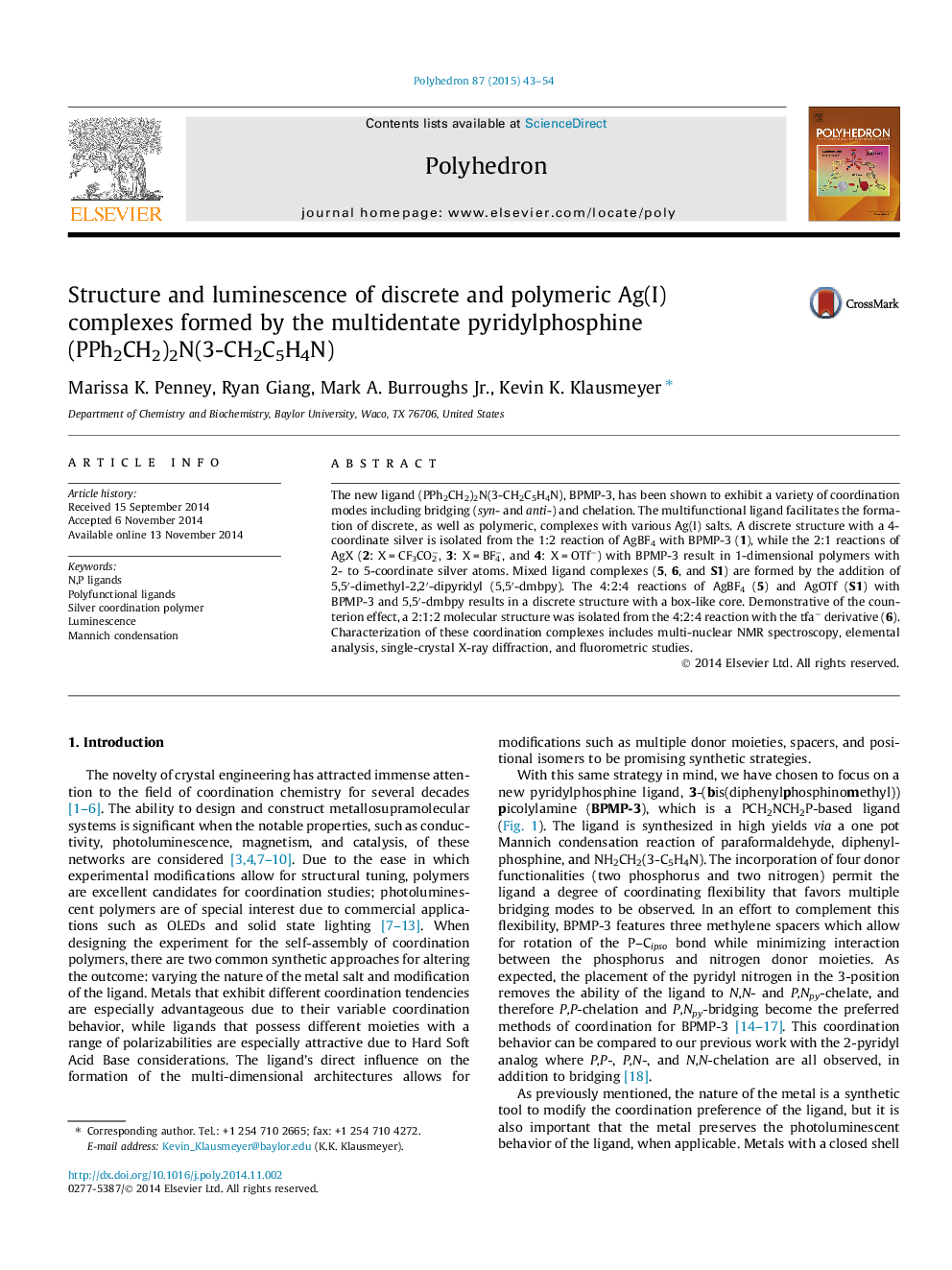| Article ID | Journal | Published Year | Pages | File Type |
|---|---|---|---|---|
| 1337337 | Polyhedron | 2015 | 12 Pages |
The new ligand (PPh2CH2)2N(3-CH2C5H4N), BPMP-3, has been shown to exhibit a variety of coordination modes including bridging (syn- and anti-) and chelation. The multifunctional ligand facilitates the formation of discrete, as well as polymeric, complexes with various Ag(I) salts. A discrete structure with a 4-coordinate silver is isolated from the 1:2 reaction of AgBF4 with BPMP-3 (1), while the 2:1 reactions of AgX (2: X = CF3CO2−, 3: X = BF4−, and 4: X = OTf−) with BPMP-3 result in 1-dimensional polymers with 2- to 5-coordinate silver atoms. Mixed ligand complexes (5, 6, and S1) are formed by the addition of 5,5′-dimethyl-2,2′-dipyridyl (5,5′-dmbpy). The 4:2:4 reactions of AgBF4 (5) and AgOTf (S1) with BPMP-3 and 5,5′-dmbpy results in a discrete structure with a box-like core. Demonstrative of the counterion effect, a 2:1:2 molecular structure was isolated from the 4:2:4 reaction with the tfa− derivative (6). Characterization of these coordination complexes includes multi-nuclear NMR spectroscopy, elemental analysis, single-crystal X-ray diffraction, and fluorometric studies.
Graphical abstractFour discrete complexes of Ag(I) with (PPh2CH2)2N(3-CH2C5H4N) (BPMP-3) and 5,5′-dimethyl-2,2′-dipyridyl (5,5′-dmbpy) were synthesized: [Ag(BPMP-3)2][BF4], [Ag4(BPMP-3)2(5,5′-dmbpy)4][BF4]4, [Ag4(BPMP-3)2(bpy)4][OTf]4, and [(Agtfa)2(BPMP-3)(5,5′-dmbpy)2]. The reaction of AgX (X = BF4, tfa, OTf) with BPMP-3 results in the formation of the 1-dimensional polymers [(AgX)2(BPMP-3)]∞.Figure optionsDownload full-size imageDownload as PowerPoint slide
